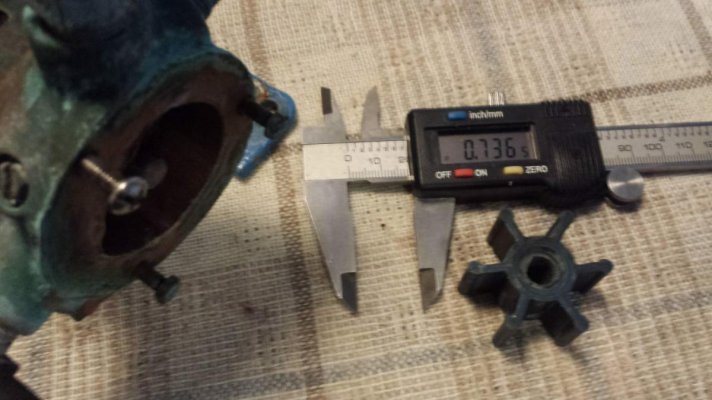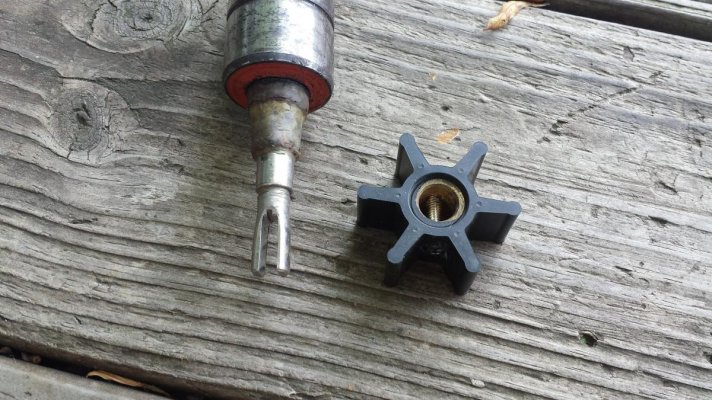grandbanksbayfield
Senior Member
Three days ago while on the final lap out of Lake Superior (Bayfield WI to Mackinaw City MI) this happened: We tied up at the Harbor of Refuge just south of Whitefish Point. Boat (GB32 with 135 HP Lehman) had been running at about 175 F for the past 200 miles. In the morning we started across Whitefish Bay towards to Sault St. Marie and noticed she was running at 190 -- a sudden, unwelcome change. I texted my mechanic back in Bayfield and he said to check the intake into the freshwater cooler when we stopped, but that it was probably okay to keep running if we had sufficient coolant in the engine block, temperature was constant and there were no obvious leaks, etc. The boat had a good water flow out the exhaust. We proceeded and got to Mackinaw City the next day with the engine running right on the 190 mark. The following morning we took the endcaps off the engine cooler. The zinc had completely turned to white chalk and crumbles of it were in front of the cooling tube unit. Removed all of this crap and flushed out the unit from both ends with a garden hose and sprayer. All tubes were clean and we could shine a flash light through them, but they had a little scale in them. Next: Removed the hoses from the ends of the oil cooler (first thing behind the water pump). Its intake end was FULL of crumbled parts of water pump impeller blades. There was almost a quarter of a cup of these in the intake end. We got them out and then backflushed the unit and it was clean. Thereafter, we assembled everything again, tightened down the hose clamps and declared a victory. Two things we noticed that should be heeded: First, when removing hoses from these units, do not loosen them with any tool that will compress them because the end nipples are made of soft bronze or brass and can crush easily getting out of round. Secondly: After the oil cooler unit, the large particles will not be able to get into the engine cooler tubes - they are about 3/16 inch in diameter. If those tubes are clear, you probably have nothing to worry about in the transmission cooler. Finally: If you buy an older boat, it us a good idea to disassemble this system or have a marine mechanic do it for you and check it for obstructions. A lot of people replace fried water pump impellers and never even think of where the pieces went. Another mystery: Why did this not happen early in the voyage? The fragments were there when we left Bayfield. Perhaps running the engine at real cruising rpm for hours on end compacted them together so they were less porous? Who knows? This situation was just like we had installed a new, hotter thermostat. By the way, we started the job at eight and buttoned it up at eleven and went out for lunch. It was not fun, but very interesting. My friend Lee and I do not plan to come out of retirement and go into marine mechanics -- believe me!!
Last edited:





